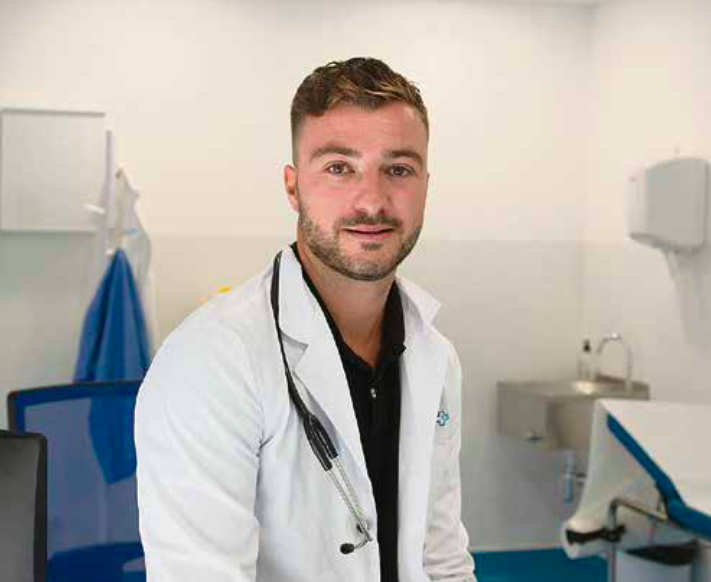

ASTRACE

Ask a doctor about a prescription for ASTRACE

How to use ASTRACE
INSTRUCTIONS FOR MEDICAL USE OF THE MEDICINAL PRODUCT PENTASA (PENTASA®)
Composition
active substance: mesalazine; 1 tablet contains mesalazine 500 mg; excipients: povidone, ethylcellulose, magnesium stearate, talc, microcrystalline cellulose.
Pharmaceutical Form
Prolonged-release tablets.
Main Physical and Chemical Properties
Round tablets with inclusions from white-gray to pale brown in color. With a notch, a line, and an imprint of "500" and "mg" on both sides of the line on one side of the tablet, and "PENTASA" on the other side of the tablet. Diameter: 13.5 mm.
Pharmacotherapeutic Group
Anti-inflammatory agents used in diseases of the intestine. Aminosalicylic acid and similar agents.
ATC Code A07E C02.
Pharmacological Properties
Pharmacodynamics
Mesalazine is the active component of sulfasalazine, which is used to treat ulcerative colitis and Crohn's disease.
Clinical studies indicate that the therapeutic properties of mesalazine when taken orally and rectally are due to its local action on the inflamed areas of the intestine, rather than a systemic effect. Available information suggests that the severity of intestinal inflammation in patients with ulcerative colitis is inversely correlated with the concentration of mesalazine in the mucous membrane.
In patients with inflammatory bowel diseases, increased migration of leukocytes, abnormal production of cytokines, increased production of arachidonic acid metabolites (especially leukotriene B4), and increased concentration of free radicals in the inflamed tissues of the intestine are observed.
The mechanism of action of mesalazine is not fully understood, although it may involve mechanisms such as stimulation of the gamma form of peroxisome proliferator-activated receptors (PPAR-γ) and inhibition of nuclear factor kappa-B (NF-κB) in the intestinal mucosa.
The pharmacological effect of mesalazine in in vitro and in vivo studies is the suppression of leukocyte chemotaxis, reduction of cytokine and leukotriene production, and neutralization of free radicals. Although this is not definitively established, the above processes are likely to play a key role in the clinical efficacy of mesalazine.
The risk of developing colorectal cancer is slightly increased in patients with ulcerative colitis. A comparative analysis of 9 non-experimental studies (3 group studies and 6 case-control studies) of 334 cases of colorectal cancer and 140 cases of dysplasia in 1932 patients with ulcerative colitis showed that in patients treated with mesalazine, the risk of developing colorectal cancer decreased by 50%, and also showed a combined clinical outcome for colorectal cancer and dysplasia. The reduction in the risk of developing colorectal cancer depends on the dosage, as evidenced by a comparative analysis of studies of daily dosage records, according to which mesalazine has a chemopreventive effect at a dose of ≥ 1.2 g/day. Additionally, chemoprevention is associated with the lifetime dose of mesalazine. It has been found that maintenance treatment with mesalazine reduces the risk of developing colorectal cancer.
The action of mesalazine, as revealed by experimental models and patient biopsies, confirms the role of the drug in preventing colorectal cancer caused by ulcerative colitis, as well as reducing the number of signaling pathways associated with and not associated with the inflammatory process involved in the development of colorectal cancer caused by colitis. However, the data from the meta-analysis, which included reference and general populations, provided ambiguous clinical information regarding the benefits of mesalazine in reducing the risk of carcinogenesis associated with ulcerative colitis.
Pharmacokinetics
The therapeutic effect of mesalazine is primarily determined by its local contact with the inflamed area of the intestinal mucosa.
Pentasa, prolonged-release tablets, is a microgranule of mesalazine coated with ethylcellulose. After administration and dissolution, mesalazine is gradually released from each microgranule during the passage of the tablet through the gastrointestinal tract from the duodenum to the rectum at any pH values of the intestinal environment. Within an hour after oral administration of the drug, microgranules are found in the duodenum, regardless of food intake. The average passage time through the intestine in healthy volunteers is 3-4 hours.
Absorption. 30 to 50% of the orally administered drug is absorbed in the small intestine of healthy volunteers. Mesalazine is detected in plasma 15 minutes after administration, and the maximum concentration of mesalazine in plasma is reached 1-6 hours after administration. The concentration of mesalazine in plasma gradually decreases and is no longer detectable 12 hours after administration. The curve of acetylmesalazine concentration in plasma has the same character, but is generally characterized by higher concentrations and slower elimination.
Dosing regimens of mesalazine 1 time per day (1 × 4 g/day) and 2 times per day (2 × 2 g/day) lead to comparable systemic exposure (AUC) over 24 hours and indicate continuous release of mesalazine from the drug form during the treatment period. With oral administration, a steady state is reached within 5 days.
| Mesalazine | Single dose | Steady state | ||
| Cmax(ng/mL) | AUC0–24(h·ng/mL) | Cmax(ng/mL) | AUC0–24(h·ng/mL) | |
| 2 g 2 times a day | 5103.51 | 36,456 | 6803.70 | 57,519 |
| 4 g 1 time a day | 8561.36 | 35,657 | 9742.51 | 50,742 |
The molecular weight of mesalazine is 153.13 g/mol; acetylmesalazine is 195.17 g/mol.
The release and absorption of mesalazine after oral administration do not depend on food intake, while systemic exposure may increase.
Distribution. The binding of mesalazine to plasma proteins is approximately 50%, and acetylmesalazine is approximately 80%. Mesalazine and acetylmesalazine do not pass through the blood-brain barrier.
Biodegradation. Mesalazine is converted to N-acetylmesalazine (acetylmesalazine) both presystemically in the intestinal mucosa and systemically in the liver, mainly by N-acetyltransferase-1 (NAT-1). Minor acetylation is carried out by bacteria in the large intestine. The acetylation of mesalazine is likely not related to the patient's acetylation phenotype. The metabolic ratio in plasma of acetylmesalazine to mesalazine is 3.5 and 1.3, respectively, after oral administration at a dose of 500 mg 3 times a day and 2 g 3 times a day, which reflects dose-dependent acetylation that may be caused by saturation with the drug. It is also believed that acetylmesalazine is clinically and toxicologically inactive.
Excretion. The half-life of mesalazine is approximately 40 minutes, and acetylmesalazine is approximately 70 minutes. Due to the gradual release of mesalazine from the drug form during passage through the gastrointestinal tract, the half-life after oral administration cannot be determined. However, a steady state is reached after oral administration within 5 days.
Mesalazine and acetylmesalazine are excreted in the urine and feces. The urine mainly contains acetylmesalazine.
In patients with impaired liver and kidney function, due to decreased excretion rates and increased systemic concentrations of mesalazine, the risk of kidney damage may increase.
Special Patient Groups
Pathophysiological changes, such as diarrhea and increased intestinal activity, observed in active inflammatory bowel disease, have only a minor effect on the penetration of mesalazine into the intestinal mucosa after oral administration. In patients with accelerated intestinal transit, an increase in the excretion of the daily dose with urine by 20-25% was observed. Similarly, excretion with feces increased.
Clinical Characteristics
Indications
Nonspecific ulcerative colitis of mild to moderate severity, Crohn's disease.
Contraindications
Hypersensitivity to mesalazine, to any of the components of the drug, or to salicylates. Severe liver and/or kidney dysfunction. Gastric or duodenal ulcer. Hemorrhagic diathesis.
Interactions with Other Medicinal Products and Other Forms of Interactions
Concomitant treatment with Pentasa and azathioprine, 6-mercaptopurine, or thioguanine in studies led to an increased frequency of myelosuppressive effects; an interaction between these agents is likely. The mechanism of this interaction is not definitively established. It is recommended to regularly monitor the white blood cell count and adjust the doses of thiopurines accordingly.
According to unconfirmed data, mesalazine may weaken the anticoagulant effect of warfarin.
Possible enhancement of the hypoglycemic effect of sulfonylurea derivatives, toxic effect of methotrexate. The activity of furosemide, spironolactone, sulfonamides, rifampicin, and uricosuric agents (probenecid and sulfinpyrazone) may be weakened. Mesalazine may potentiate the undesirable effect of glucocorticoids on the gastric mucosa and may reduce the absorption of digoxin.
Special Warnings and Precautions
Most patients with intolerance or hypersensitivity to sulfasalazine can use the Pentasa drug without the risk of similar reactions. However, the drug should be used with caution in patients with an allergy to sulfasalazine (risk of allergy to salicylates).
In case of acute symptoms of intolerance, such as spasms and acute abdominal pain, constipation, severe headache, and rash, treatment should be discontinued immediately.
The drug should be used with caution in patients with impaired liver function.
Before starting or during treatment, the doctor may decide to monitor liver function tests, such as ALT or AST.
The drug is not recommended for patients with renal insufficiency. It is necessary to regularly monitor kidney function (e.g., serum creatinine level, serum urea level, urine sedimentation, and methemoglobin concentration), especially at the beginning of treatment. It is necessary to determine the urological status of the patient (test strips) before and during treatment, at the doctor's discretion. In patients who develop kidney dysfunction during treatment, mesalazine-induced nephrotoxicity should be suspected.
Concomitant use of other drugs with a known nephrotoxic effect requires more frequent monitoring of kidney function.
When using mesalazine, patients have reported nephrolithiasis, including the formation of stones consisting 100% of mesalazine. Patients should be advised to drink sufficient fluids during treatment.
Patients with respiratory function disorders, including bronchial asthma, should be under close medical supervision during the treatment course (see "Adverse Reactions" section).
Mesalazine-induced hypersensitivity reactions from the heart (myocarditis and pericarditis) occur rarely. Very rarely, pathological changes in the blood system have been observed during mesalazine treatment. Before starting and during treatment, the doctor may recommend a blood test with a leukocyte formula.
When treating concomitantly with azathioprine, 6-mercaptopurine, or thioguanine, the risk of developing pathological changes in the blood may increase (see "Interactions with Other Medicinal Products and Other Forms of Interactions"). If signs or suspicion of such adverse reactions occur, treatment should be discontinued.
It is recommended to perform additional blood and urine tests 14 days after the start of treatment, and then 2-3 tests at 4-week intervals. If the results are within normal limits, subsequent tests should be performed every 3 months. If additional symptoms appear, these tests should be performed immediately.
Interference with Laboratory Tests
There have been several reports of a possible effect on the determination of normetanephrine in urine using liquid chromatography, which led to the receipt of false-positive results in patients with exposure to sulfasalazine or its metabolite, mesalamine/mesalazine.
Severe Skin Reactions
Severe skin reactions (SSR), including drug-induced eosinophilia with systemic symptoms (DRESS syndrome), Stevens-Johnson syndrome (SJS), and toxic epidermal necrolysis (TEN), have been reported in association with mesalazine treatment.
Treatment with mesalazine should be discontinued at the first signs of severe skin reactions, such as rash, mucosal lesions, or any other signs of hypersensitivity.
Mesalazine may cause a red-brown discoloration of urine after contact with sodium hypochlorite bleach (e.g., in toilets cleaned with sodium hypochlorite-containing bleach).
Use During Pregnancy or Breastfeeding
Pregnancy
It is known that mesalazine passes through the placental barrier. The concentration of the drug in the umbilical cord blood is lower than the concentration in the maternal blood. The same concentrations of the acetylmesalazine metabolite are found in the umbilical cord and maternal blood.
In several non-experimental studies, no teratogenic effects or significant risk of application to humans were found. Animal studies of oral mesalazine administration did not reveal direct or indirect harmful effects on pregnancy, embryonic and fetal development, childbirth, or postnatal development.
There are limited published data on the use of the Pentasa drug in pregnant women, which suggest no increase in the overall rate of congenital malformations.
Some data suggest an increased risk of premature birth, stillbirth, and low birth weight; however, these adverse outcomes of pregnancy may also be associated with active inflammatory bowel disease.
There have been reports of blood system disorders (pancytopenia, leukopenia, thrombocytopenia, anemia) in newborns whose mothers used mesalazine.
In one case, after prolonged use of mesalazine in high doses (2-4 g orally) during pregnancy, kidney failure was reported in a newborn.
Mesalazine can be used during pregnancy only when, in the doctor's opinion, the potential benefit to the mother outweighs the potential risk to the fetus. The underlying disease (inflammatory bowel disease) may increase the risk of an adverse pregnancy outcome.
Breastfeeding
Mesalazine passes into breast milk. The concentration of mesalazine in breast milk is lower than in the mother's blood, while the metabolite formed (acetylmesalazine) appears in the milk in the same or higher concentrations.
Data on the oral administration of the drug during breastfeeding are limited. Controlled studies of the effect of the Pentasa drug during breastfeeding have not been conducted. It cannot be ruled out that hypersensitivity reactions, such as diarrhea, may occur in infants. If diarrhea occurs in a breastfed infant, breastfeeding should be discontinued.
The Pentasa drug can be taken during breastfeeding, but only when, in the doctor's opinion, the potential benefit to the mother outweighs the potential risk to the child.
Fertility
Animal studies have shown no effect of mesalazine on fertility in males and females.
Ability to Affect the Speed of Reaction When Driving or Operating Other Mechanisms
Mesalazine does not affect or has a minor effect on the ability to drive or work with other mechanisms. If dizziness is observed during treatment, one should refrain from driving.
Method of Administration and Dosage
| Adults Individual dosage. | |||
| Ulcerative colitis | Crohn's disease | ||
| Exacerbation stage | Up to 4 g of mesalazine 1 time a day or in several doses (divided into 2-3 doses). | Up to 4 g of mesalazine per day in several doses (divided into 2-3 doses). | |
| Maintenance therapy | Recommended intake of 2 g of mesalazine 1 time a day. | Up to 4 g of mesalazine per day in several doses. | |
| Children (≥ 6 years) Individual dosage. There are only limited documented data on the effectiveness for children aged 6-18 years. | |||
| Ulcerative colitis | Crohn's disease | ||
| Exacerbation stage | Initial dose - 30-50 mg/kg/day in several doses. Maximum dose - 75 mg/kg/day in several doses. Total dose - no more than 4 g/day (maximum dose for adults). | ||
| Maintenance therapy | Initial dose - 15-30 mg/kg/day in several doses. Total dose - no more than 2 g/day (recommended dose for adults). | Initial dose - 15-30 mg/kg/day in several doses. Total dose - no more than 4 g/day (recommended dose for adults). | |
As a rule, children with a body weight of less than 40 kg are prescribed half the dose for adults, and children with a body weight of more than 40 kg are prescribed the full dose for adults.
Tablets should be taken orally, without chewing. To facilitate swallowing, the tablet can be dissolved in 50 mL of cold water. The mixture should be stirred and taken immediately.
The duration of treatment is determined by the doctor, depending on the course of the disease.
Children
The drug should not be used to treat children under the age of 6.
Overdose
There is only limited clinical experience with overdose of the Pentasa drug, which does not indicate the presence of kidney or liver toxicity. There is no specific antidote; treatment should be symptomatic and supportive. There have been reports of patients taking daily doses of the drug up to 8 g for a month without any adverse effects.
Due to the development of prolonged-release granules and the specific pharmacokinetic properties of mesalazine, poisoning is not expected even with high doses of the drug.
Generally, symptoms are expected to correspond to the symptoms of salicylate poisoning: acid-base imbalance, hyperventilation, and pulmonary edema, dehydration caused by sweating and vomiting, hypoglycemia.
Treatment of overdose: in case of acidosis or alkalosis, restoration of acid-base and electrolyte balance; in case of dehydration, rehydration; in case of hypoglycemia, administration of glucose. Additionally, intravenous infusion of electrolyte solutions should be performed to increase diuresis. Close monitoring of kidney function is necessary.
Adverse Reactions
Adverse reactions that were most frequently observed during clinical trials: diarrhea, nausea, abdominal pain, headache, vomiting, and rash. Hypersensitivity reactions and drug fever are occasionally observed.
In connection with mesalazine treatment, severe skin reactions (SSR), including drug-induced eosinophilia with systemic symptoms (DRESS syndrome), Stevens-Johnson syndrome (SJS), and toxic epidermal necrolysis (TEN), have been reported (see "Special Warnings and Precautions" section).
The frequency of adverse effects reported during clinical trials and post-marketing surveillance has been determined as follows: common (from ≥ 1/100 to < 1/10), rare (from ≥ 1/10000 to < 1/1000), very rare (< 1/10000), frequency unknown (cannot be established based on available data).
From the blood and lymphatic system: very rare - eosinophilia (as part of an allergic reaction), anemia, aplastic anemia, leukopenia (including granulocytopenia and neutropenia), thrombocytopenia, agranulocytosis, pancytopenia.
From the immune system: very rare - pancolitis, hypersensitivity reactions, including anaphylactic reactions, drug reactions with eosinophilia and systemic symptoms (DRESS syndrome).
From the nervous system: common - headache; rare - dizziness; very rare - peripheral neuropathy, benign intracranial hypertension (in children during puberty).
From the heart: rare - myocarditis and pericarditis.
From the respiratory system, thoracic cavity, and mediastinum: very rare - allergic and fibrotic changes in the lungs (including shortness of breath, cough, bronchospasm, allergic alveolitis, pulmonary eosinophilia, interstitial lung disease, pulmonary infiltration, pneumonitis).
From the gastrointestinal tract: common - diarrhea, abdominal pain, nausea, vomiting, flatulence; rare - increased amylase level, acute pancreatitis; very rare - pancolitis.
From the liver and bile ducts: very rare - liver dysfunction, including increased liver enzyme levels, signs of cholestasis (e.g., increased alkaline phosphatase, gamma-glutamyltransferase, and bilirubin levels), hepatotoxicity (including hepatitis, cholestatic hepatitis, cirrhosis, liver failure).
From the skin and subcutaneous tissue: common - rash (including urticaria, erythematous rash); rare - photosensitivity reactions; very rare - reversible alopecia, Quincke's edema, allergic dermatitis, multiform erythema; frequency unknown - Stevens-Johnson syndrome, toxic epidermal necrolysis, drug-induced eosinophilia with systemic symptoms (DRESS syndrome).
From the musculoskeletal system and connective tissue: very rare - myalgia, arthralgia, reactions similar to lupus erythematosus.
From the kidneys and urinary system: very rare - kidney dysfunction (including acute and chronic interstitial nephritis, nephrotic syndrome, kidney failure (acute and chronic), which may disappear after withdrawal of the drug); frequency unknown - nephrolithiasis, change in urine color.
From the reproductive system and breast: very rare - oligospermia (reversible).
General disorders: very rare - drug fever.
*The mechanism of development of mesalazine-induced myocarditis and pericarditis, pancreatitis, nephritis, and hepatitis is unknown, but may be of an allergic nature.
**Photosensitization: more severe reactions have been reported in patients with existing skin pathology, such as atopic dermatitis and atopic eczema.
***See "Special Warnings and Precautions" for detailed information.
It is important to note that some of these disorders may be associated with inflammatory bowel disease.
Reporting Adverse Reactions
Reporting suspected adverse reactions after the approval of a medicinal product is important. This allows for the continued monitoring of the benefit/risk ratio of the medicinal product. Healthcare professionals are asked to report any suspected adverse reactions through the national reporting system.
Shelf Life
3 years.
Storage Conditions
Store in a place inaccessible to children. Store at a temperature not exceeding 25 °C in a light-protected place.
Packaging
10 tablets in a blister pack, 5 or 10 blister packs in a carton box.
Release Category
By prescription.
Manufacturer
Ferring GmbH, Germany.
Manufacturer's Location and Address
Wittland 11, 24109 Kiel, Germany.
- Country of registration
- Active substance
- Prescription requiredNo
- Manufacturer
- This information is for reference only and does not constitute medical advice. Always consult a licensed doctor before taking any medication. Oladoctor is not responsible for medical decisions based on this content.
- Alternatives to ASTRACEDosage form: solution, 300mg/3mlActive substance: acetylcysteineManufacturer: Мефар Ілач Сан. А.Ш.Prescription requiredDosage form: tablets, 200 mgActive substance: acetylcysteinePrescription not requiredDosage form: tablets, effervescent tablets 600mgActive substance: acetylcysteinePrescription not required
Alternatives to ASTRACE in other countries
The best alternatives with the same active ingredient and therapeutic effect.
Alternative to ASTRACE in Spain
Alternative to ASTRACE in Poland
Online doctors for ASTRACE
Discuss dosage, side effects, interactions, contraindications, and prescription renewal for ASTRACE – subject to medical assessment and local rules.














